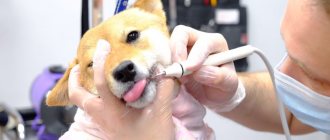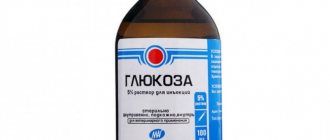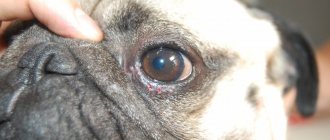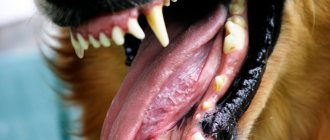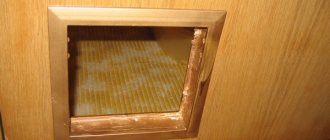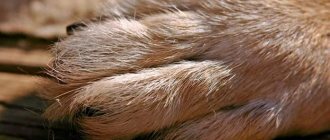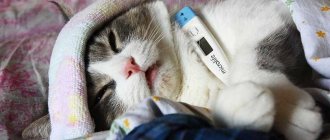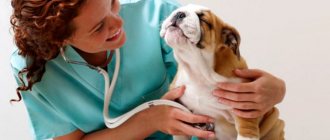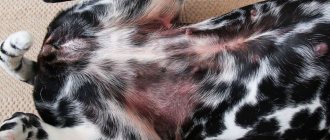Why does it happen?
Mostly in cats, a diaphragmatic hernia is observed due to traumatic factors. The injuries can be open, resulting in damage to the chest and abdominal cavity, and the diaphragm is also injured. If we talk about closed injuries of a traumatic nature, they are observed during a fall from a height, road traffic accidents, and also in a situation where intra-abdominal pressure increases sharply and greatly.
Congenital diaphragmatic hernia in kittens is also not uncommon. This pathology is usually divided into 4 types:
- Pleuroperitoneal. Rarely diagnosed. In most situations, pets with this diaphragm defect die during childbirth or a few hours after birth.
- Pericardio-pleuroperitoneal. A common type of disease. Mostly found in Persian felines.
- Sliding. It develops due to weakening of the diaphragmatic ligament, which causes the stomach to move upward. No strangulated hernias are observed.
- Paraesophageal. This type of pathology is characterized by fixation of the cardiac region and displacement of the digestive organs into the chest cavity through the esophageal opening, which is excessively dilated. Hernias can be strangulated and cause severe pain.
Peritoneo-pericardial diaphragmatic hernia is a congenital defect, as a result of which a connection between the abdominal cavity and the cardiac membrane is formed in a cat during intrauterine development due to a violation of the integrity of the diaphragm.
What symptoms indicate pathology?
Against the background of this pathology, the animal develops shortness of breath, which is difficult for the owner to notice.
It is important for pet owners to monitor the general condition of the kitten. As the disease progresses, it becomes apathetic and does not make contact with the owner. If the pathology has not been identified and appropriate treatment has not been carried out, breathing problems develop. The animal may choke and experience shortness of breath. Since the body does not receive the required amount of oxygen, changes from the pink tint of the mucous membranes to blue are observed. If the abdominal organs put too much pressure on the blood vessels, there is a risk of pulmonary edema.
With pericardial-diaphragmatic disease, cats may not have any symptoms. This is often due to the fact that abdominal organs slide freely into the pericardium. In such a situation, a hernia is often diagnosed when an x-ray is routinely performed. However, there are pets in whom the pathology provokes loss of appetite, constant vomiting, diarrhea and weight loss. This symptomatology is caused by strangulation of the stomach. Some pets suffer from compression of the heart and lungs.
Hiatal hernia in cats
More photos
Authors):
A.N.
Lapshin, head of the department of surgery and endoscopy, veterinary surgeon, Center for Veterinary Minimally Invasive Surgery and Diagnostics “Komondor”, M.V. Nazarova, veterinary cardiologist, anesthesiologist, Center for Veterinary Minimally Invasive Surgery and Diagnostics “Komondor”, O.S. Syatkovskaya, veterinarian-felinologist, Haabersti Felinological Veterinary Center, Estonia, M.N. Lapshin, head of surgery and endoscopy department, DVM, surgery specialist, M. Nazarova, DVM, cardiology and anesthesiology specialist, O. Sjatkovskaja, Head of medical department, DVM, feline medicine specialist, M. Lapshin, head of surgery department, DVM, surgery specialist Magazine:
No. 2 - 2014
UDC 619:616.07:616.3:619.7
Keywords:
laparoscopic-assisted fundopexy, minimally invasive surgery, hiatal hernia
Key words:
laparocopic-assisted fundopexy, minimal invasive surgery, hiatal hernia
annotation
Laparoscopically-assisted fundopexy opens up new possibilities for the treatment of hiatal hernia. We find it more convenient and promising for our patients. This case is the first of a total number of minimally invasive treatments.
Summary
Laparoscopic-assisted fundopexy is a new opportunity for hiatal hernia treatment. We find it more comfortable and promising for our patients. This case is the first one of total minimal invasive treatment protocol.
A hiatal hernia is characterized by cephalad displacement of the stomach through the esophageal opening of the diaphragm. There are two main types of hiatal hernias: type 1 (sliding) and type 2 (paraesophageal). Most often, a sliding type of hiatal hernia is determined in dogs and cats. Classic clinical signs are hypersalivation, vomiting and failure to gain weight. They are usually associated with or aggravated by secondary megaesophagus and aspiration pneumonia.
What to do?
Diagnostic measures
Sometimes it is advisable to examine an animal using an ultrasound method in order to accurately diagnose it.
If the owner notices breathing problems in a cat or other undesirable symptoms, it is important not to delay a visit to the veterinary clinic. First of all, the veterinarian interviews the owner and clarifies how long ago the cat’s condition worsened. Then the cat is examined and x-rayed. A routine examination or a technique during which a contrast agent is used is prescribed. If part of the digestive organs is localized in the chest cavity, the preliminary diagnosis of diaphragmatic hernia is confirmed. To detect a diaphragmatic rupture, the cat is prescribed a peritoneogram. Sometimes an ultrasound examination is required.
How is the treatment carried out?
Only surgical intervention can help cope with diaphragmatic hernia in cats. The operation involves opening the chest by a veterinarian. After this, he returns the organs that have moved back to the peritoneum. Then the doctor sews up the diaphragm, but first resorts to plastic surgery. The surgeon places a special mesh on the muscle-tendon plate. In a situation where internal organs are strangulated, their resection is sometimes required.
If after the intervention the animal may develop a bacterial infection, then appropriate medications are prescribed.
12 hours before surgical treatment of a diaphragmatic hernia, the cat is prohibited from giving food. It is not recommended to give water to your pet 2-3 hours before surgery. In most situations, surgery is scheduled in the morning. By evening the animal can return home. The rehabilitation period takes about 14 days on average. After this time, the stitches are often removed. For 2 weeks, the cat's owner will need to give her complete rest and monitor the operated area. Sutures must be treated with medications prescribed by a veterinarian. Sometimes antibacterial treatment is prescribed to avoid infection of the operated area.
Preventive actions
To prevent the occurrence of a diaphragmatic hernia in a cat, veterinarians from the Pride clinic recommend that pet owners be attentive to changes in the cat’s condition. If any problems with digestion or bowel movements are detected, it is important not to delay a visit to the veterinary clinic. Timely diagnosis allows us to identify the possible presence of a congenital hernia and carry out appropriate treatment. If your pet is kept in an apartment on the upper floors, you should not let him sleep on the windowsill or walk along the ledge. Once again, it is not recommended to open the balcony and windows unless necessary. Such precautions are due to the fact that many situations have been recorded when cats, trying to jump onto the windowsill, did not calculate the distance, missed and fell.
Types of hernias in kittens
Hernias vary by location:
- Umbilical hernia in a kitten
- the sac is located in the middle of the abdomen in the umbilical zone. The most common type of hernia in kittens under 1 month of age; - Inguinal hernia in a kitten
– located in the lower abdomen, in the area of the last nipples, closer to the genitals; - Perineal hernia in a kitten
- located under the anus in male kittens or near the vagina in female kittens; - Diaphragmatic hernia in a kitten
- the formation is located in the sternum, under the diaphragm. The most unpleasant type of hernia that occurs in young individuals.
Very rarely, small kittens develop intervertebral and pericardial-peritoneal hernias. The first of these usually occurs in very old cats, while the second is usually the result of an unrepaired diaphragmatic hernia.
Types of pathology: symptoms, diagnosis, treatment, consequences
There are several types of feline hernias: diaphragmatic, umbilical, pericardial, inguinal, perineal and intervertebral. Each of these types manifests itself differently.
Treatment of this disease depends on its type, therefore, to develop a treatment plan, it is not enough to detect a hernia; it is also necessary to determine its type.
Diaphragmatic hernia
This hernia is often diagnosed as a birth defect in kittens. It can also be acquired by a mature animal due to a fall from a height and injury. Internal organs are pressed into the muscle separating the chest and abdominal cavities, which provokes its excessive stretching and breakthrough. The problem can be identified by the following symptoms:
- breathing problems;
- pulse that is difficult to detect by palpation;
- cyanosis (blueness) of the mucous membranes;
- lethargy;
- complete or partial loss of interest in food;
- pulmonary edema.
Diaphragmatic hernia on x-ray
Diagnosis of a diaphragmatic hernia is difficult, because the images obtained as a result of an X-ray examination reveal shadows of unknown etiology. To clarify the picture, before X-rays are taken, the four-legged patient is fed porridge with the addition of barium.
Ignoring the problem, untimely or incorrect treatment can lead to the death of the animal due to increased pressure on the chest, lungs and heart. You should not try to cure a kitten or adult cat yourself at home. Removal of this type of hernia is only possible through surgery. During the operation, all intestinal loops are removed. If the integrity of the diaphragm is compromised, it is sutured.
Umbilical hernia
This is the most common type of hernial formation detected in representatives of this family. An umbilical hernia in a kitten is a hereditary phenomenon. When purchasing it, it is recommended to find out whether the baby’s parents had a similar problem. Sometimes a protrusion on the stomach of cats appears after castration.
Such a hernia is identified in a kitten or mature pet by the presence of a soft bulge on the abdomen (see photo), which can sometimes appear only after a heavy meal. The animal reacts painlessly to palpation. If the internal organs (liver, kidneys) are not affected, there is no threat to the life of the four-legged pet, as well as no signs of pathology. Otherwise, the cat may experience the following symptoms:
- vomit;
- disruption of the bowel movement process;
- heat;
- abdominal pain.
Ignoring this problem is fraught with the appearance of necrotic processes in tissues and the development of sepsis. Surgical removal of the formation is carried out after the pet reaches 6 months of age. At the initial stage of the disease, there is a high probability that it will disappear on its own. However, this does not mean that the problem can be forgotten. Constant monitoring of the animal is necessary to monitor changes in the pathological process.
If an umbilical hernia occurs after castration, it can be easily reduced only if it is formed by subcutaneous fat. The appearance of intestinal loops or bladder on a cat’s stomach is an indication for urgent surgery. Treatment of a large formation with a risk of pinching internal organs is carried out exclusively by surgery, while a small lump is usually eliminated by wearing a compression blanket for a long time. During the operation, the hernial formation is opened, the organs flowing into it are reduced, the adhesions are excised, and the ring itself is sutured.
Inguinal and perineal hernia
Externally, an inguinal hernia formation in a four-legged pet looks like a small soft lump in the lower abdomen. This problem is common among females, but is less common among males. Typically, such a hernia does not cause discomfort to its owner. Over time, it can lead to prolapse of the bladder or uterus, which can lead to loss of fertility or damage to the integrity of the bladder. For cats, this type of hernia is not so dangerous.
Veterinary clinic of Dr. Shubin
Description
Peritoneo-pericardial diaphragmatic hernia is a congenital defect in which in animals in the prenatal period a pathological connection of the abdominal cavity with the cavity of the heart sac (pericardial sac) is formed through a hole in the diaphragm (the membrane separating the thoracic and abdominal cavities). The pericardial sac fuses with the hole in the diaphragm, creating a kind of tunnel through which abdominal organs can move into the pericardium (the sac surrounding the heart) and back.
Clinical signs
In most animals, there are no signs of peritoneo-pericardial hernia; this occurs in cases where the abdominal organs slide freely from the abdominal cavity to the pericardium and back. In such animals, the hernia may be detected as an incidental finding during radiographic (x-ray) examination.
Some animals experience intermittent vomiting, decreased appetite, weight loss and diarrhea. These signs may be associated with movement and some compression of the stomach and intestines in the cardiac sac (pericardial sac). In another part of animals, when internal organs are displaced into the cardiac membrane, compression of the heart and lungs may occur, which is accompanied by shortness of breath and cough. Difficulty in breathing (dyspnea) is the most characteristic sign of peritorneo-pericardial hernia in cats; in dogs, signs of gastrointestinal dysfunction are more often observed.
Diagnostics
Peritoneo-pericardial diaphragmatic hernia is usually diagnosed by radiographic (x-ray) examination and identification of the stomach, intestines or liver in the cavity of the pericardial sac. In some cases, a radiographic examination with contrast is recommended; the animal is given barium and a series of photographs are taken to identify the abdominal organs in the cardiac sac. Cardiac ultrasound can help differentiate peritoneo-pericardial diaphragmatic hernia from cardiac enlargement due to heart failure (usually differentiated from hypertrophic cardiomyopathy in cats).
Treatment and prognosis
The only effective treatment for peritoneo-pericardial diaphragmatic hernia is surgical correction. Reconstructive surgery is indicated for all animals with signs that have developed due to displacement of organs into the cardiac membrane, as well as for all young animals, regardless of the symptoms that have developed. Older animals experience some intraoperative difficulties due to the fusion of prolapsed organs with the cardiac membrane, but if they have clinical manifestations, the best treatment method is still surgical correction. In older animals with asymptomatic peritoneopericardial hernia, periodic monitoring of the condition is acceptable, and surgical correction is carried out only if clinical signs appear.
The prognosis after surgical correction of a hernia is often favorable, complete recovery is noted, and the disease can no longer affect the animal’s life expectancy. In asymptomatic animals, the likelihood of developing clinical signs in the future has not been determined.
Veterinary clinic of Dr. Shubin, Balakovo.

